Why Does My Cat Stare at Me?
Ever wondered why does your cat stare at the wall or at people from time to time? Uncover the reasons behind this feline behaviour.
Have you ever entered a room only to catch your cat fixated on you, or seen them watch you intently while you eat? It can feel a bit unsettling, but rather than initiating a staring match, this behaviour might be your cat asking, "Why does my cat stare at me?" It could be something you inadvertently taught your feline friend.
Cats, being solitary creatures by nature, don't typically seek out eye contact for communication. However, if they believe there's something to gain from it, they might be willing to engage in this cat behavior. Understanding cat stare, body language, and the slow blink can shed light on the reasons cats engage in such behavior.
It's not just a sign of affection it's a way cats feel they can communicate with you without words, turning what might seem like a simple stare contest into a meaningful interaction.
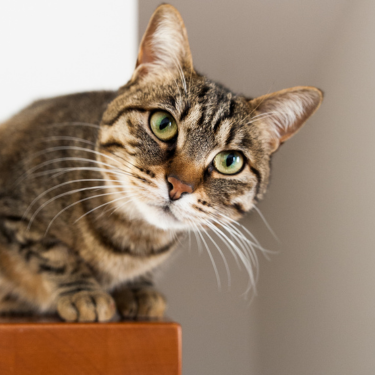
Why Does my Cat Stare at me With Big Pupils?
I've learned that there are many good reasons why cats stare at humans, lets look at each of them.
1. Looking for Attention
Some cats use their intense cat stare to grab your attention when they desire affection, Once they've succeeded in capturing your gaze they may communicate through body language such as a slow blink, vocalizations, or even rolling over or rubbing against nearby objects.
These actions can be interpreted as signs of affection or a way for the cat to express how they feel. In these instances, you can respond to their cues and approach the cat to fulfill their need for attention, thus avoiding any unintentional stare contests.
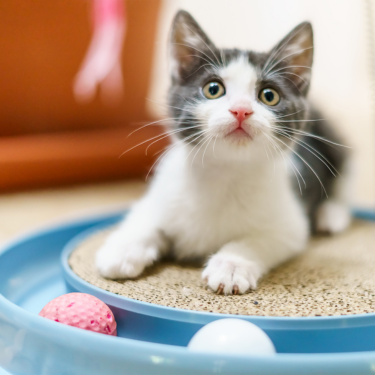
2. Requesting play
Some cats may exhibit specific body language cues such as crouching down and locking eyes with you, their pupils dilated, while their tail swishes back and forth. This intense stare can be a sign that the cat is soliciting play. Then the staring cat may suddenly sprint toward you, either swatting at your foot or veering off just before making contact.
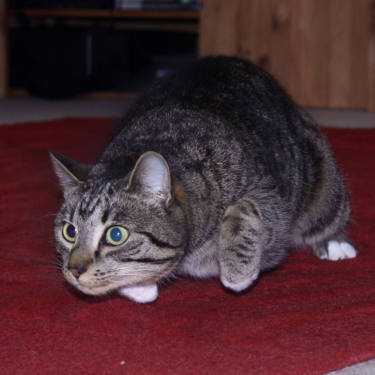
In some instances, cats have been known to tackle their pet parent’s leg and bunny kick it with their hind paws. Understanding this language cats use can help you know when your cat feels safe and wants to engage in playful interactions, making eye contact or engaging in a slow blink with them can be seen as an "eye kiss" and further reinforce the bond between you and your feline companion.
3. Hungry Kitty
Certain cats are known for exhibiting specific body language cues, such as fixating their stare on their pet parents during feeding time, which can be a telltale stare sign. Once eye contact is established, the cat may vocalize and seek physical contact, a behavior indicating their desire for attention.
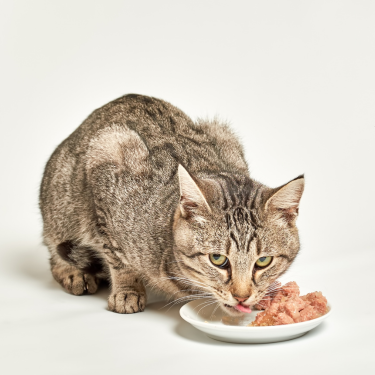
Following this interaction, some cats may proceed to walk or dash toward their food bowl or the designated feeding area. Conversely, others may maintain an intense stare aimed at you while you dine, a natural inclination as they try to figure out if sharing a meal is a good idea.
Understanding these cues is essential in deciphering what your cat naturally wants to convey. Rather than interpreting it as a rude stare, recognize it as your kitty's way of seeking attention or trying to understand your behavior. So, the next time your cat looks at you during mealtime, you'll know they're just trying to figure things out and seek a connection.
4. Expressing Cat Anxiety
Occasionally, a cat may fixate its stare, commonly referred to as a kitty look, on a person, another animal, or an object as a result of fear. Be attentive to additional signs of fear and anxiety evident in your cat’s body language, including:
- Dilated pupils
- Lowered head
- Ears pulled to the side or back
- Crouched body posture
- Raised fur (piloerection)
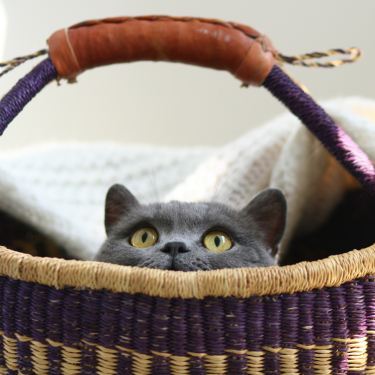
The cat may maintain its stare to monitor the stimulus that causes concern. Perhaps a sudden loud noise or movement startled the cat, or it recalls a previous negative encounter with a specific stimulus. Understanding your cat's behavior, including their tendency to stare, can involve observing their body language and considering factors such as eye contact and the context of the situation.
5. Expressing love
Cats can display affection through various behaviors, including the kitty look and maintaining eye contact with you. They may even attempt to communicate their feelings by staring at people and using body language cues such as soft blinks. This act of making eye contact and voluntarily blinking signifies the cat’s trust and comfort with you, you make them feel safe and secure enough to close their eyes.
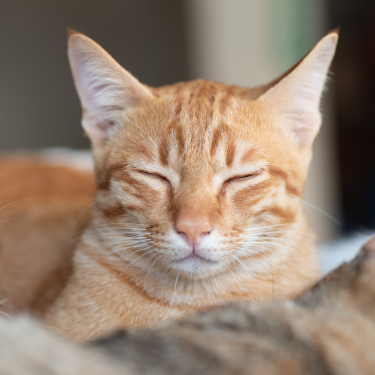
In some instances, cats may precede seeking attention by giving a gentle blink, using their body language to express their desire for interaction and connection. Understanding these subtle cues helps explain the intricate ways cats express affection and communicate with their human companions.
6. Feeling Aggressive
When a cat adopts a stiff posture, punctuated by an intense, unwavering kitty look and raised fur along the back and tail, it's a clear signal to the other party: if they persist, confrontation may follow.
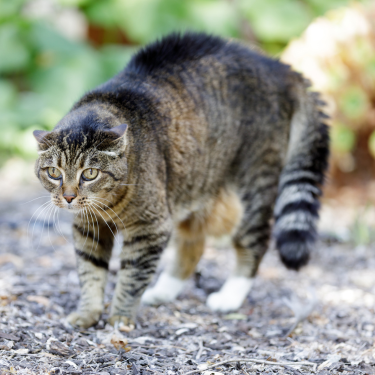
This unyielding gaze, coupled with rigid body language and piloerection, serves as a warning to the individual or animal. Understanding cat behavior and their tendency to stare, it's crucial for the other party to recognize these cues, make eye contact, and interpret the cat's body language correctly. Failing to do so may escalate the situation, potentially leading to an attack.
What To Do When a Cat Stares at You
Your response to a staring cat should be guided by their body language. Once you establish eye contact, assess the rest of their demeanor. Consider the following:
- Is the cat standing with a rigid tail and raised fur?
- Are the pupils dilated?
- What is the position of their ears?
- Is the cat emitting growls or hisses?
- Does the cat exhibit blinking?
If the cat appears fearful or aggressive, it's best to avoid direct eye contact, remain still, and consider stepping back to provide the cat with more space. Refrain from attempting to engage with, speak to, or touch the cat. Once you've distanced yourself at least 5 feet away, try redirecting the cat's attention to another object or activity, such as tossing a cat toy across the room.
Conversely, if the cat is displaying signs of affection or seeking attention or play, feel free to approach and interact with them. You can also reciprocate by making eye contact and engaging in slow blinks as a form of communication.

















